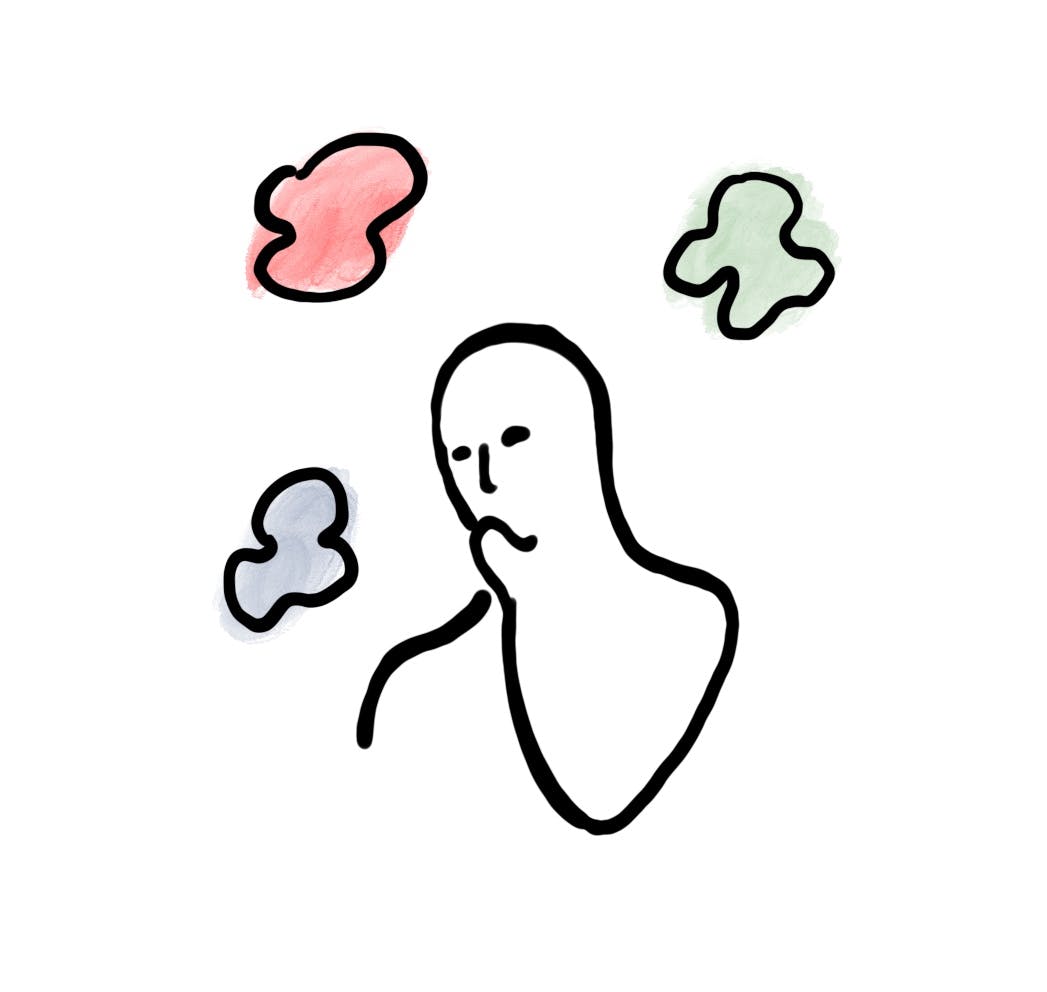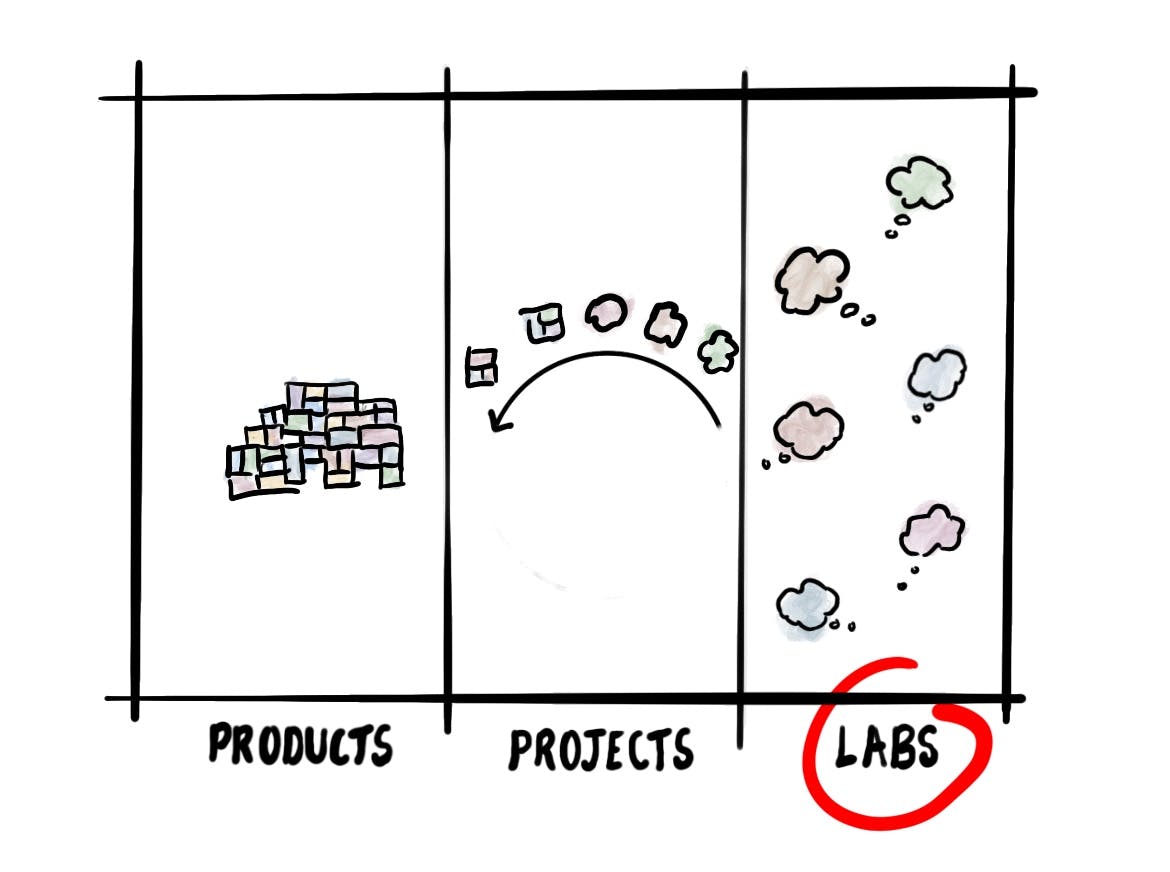"What's on the roadmap?"
After 20+ years of designing software, I’ve been asked this question countless times.
Until fairly recently I answered positively and ambitiously: “We can probably work that in.” Or, “We hope to start this fall.”

But the more specific and enthusiastic the answer, the more proportionally stressful and misaligned the delivery, it seems. Perhaps you’ve experienced something similar in your career. Even if you don’t have a formal roadmap, no doubt you have plans and others who want to know when they’re coming — be they your boss, customers, or a teacher. And the biggest problem with plans is that they never play nicely with our calendars.
Roadmaps create debt
We can only share future plans in terms of years, quarters, or months, so naturally we create proportionally specific obligations. Even soft roadmap commitments create small amounts of debt for our future selves and often, our team too.

Do you feel some trepidation around those future plans no one’s been able to get to yet? Held back from acting on an unexpectedly opportune moment? That’s the subconscious weight of debt accrued.
Alternatively, we might be entirely non-committal about future possibilities. While this avoids debt it's frustrating to hear (and certainly isn't inspiring). Yet time is all we have to slot future plans into. So what’s the solution?
There's more than one kind of time
A few years ago, one of our partners introduced me to an intriguing idea. Ancient Greeks had two words for time but we only have one — and that additional word makes a world of difference.
- Chronos time (“chronological”) refers to sequential time slotted into predictable categories (months, deadlines, phases). It sounds familiar because it’s the only kind of time we modern folks know. And it’s the root of our troubles with roadmaps and plans. Chronos is useful for goals, execution, sequencing, quantifying, planning, budgeting, incremental improvements, and scaling.
- Kairos time is “when the time is right” — it's opportunistic, unplanned, and unpredictable. We lack a modern word for it, but we can feel it when we enter Kairos time. It happens when we lose all track of time exploring ideas only to “wake up” with an insight that colors all we planned before (if we let it). Kairos is when we get an instinctive sense that it's time to move forward or sense that things aren’t quite ready yet, regardless of what our to-do list or calendar has to say about it. Kairos is useful for discovering transformative potential and is all the things Chronos is not: unmeasurable, unpredictable, unplannable, transformative, and subjective.
In a culture that only sees one kind of time, it feels like swimming upstream to carve out space outside the bounds of our calendar or to-do list. But making space for creative, opportunistic shifts not only results in better long-term results, it helps us feel more creatively inspired in our work. (And uninspired people don’t create inspiring products.)
The first step to making space for Kairos time is to name it something other than a project, to.-do list, or any other Chronos tool. Our team named our space "The Labs". It totally replaced our "Roadmap."

How to create your own Lab space
The Pathwright Labs aren't a physical location, but a mental space we enter to explore and experiment with new ideas debt free. We keep our Labs unique by using a different set of collaboration principles and tools than we do for most other work. Here are five of them:
Focus on ideas, not tasks: The Labs are where we explore any idea or rabbit trail that’s possible to discuss or sketch. Anyone in a Lab not only has permission to freely explore but is expected to. "Task", "plan" and "date" are four-letter words in this kind of conversation.
Tools: We use Discord to talk (audio-only to stay focused on ideas) + a screen share of a collaborative whiteboard where we visually map out ideas. (FigJam and Whimsical are both handy collaborative whiteboards for remote teams.) For personal exploration, we use idea-connecting note-taking tools like Roam Research, Notion, Craft, pencils and notebooks.
Invite experts: There's nothing that kills a creative exploration faster than someone who has no expertise to contribute. A Lab is not a classroom. But informed diverse perspectives are critically valuable. The experts on our team invite in Lab partners and customers with different perspectives, goals, or expertise to explore together.
Tools: we use Calendly, Typeform, and emails to invite customers and partners to mutually beneficial Lab conversations. For best results, keep the group size small.
Prioritize Containment: Avoid "lab leaks" where half-baked idea spread into actual plans and project work. If a Lab idea is any good, it can be highly disruptive to what's already in focus and must be introduced carefully. It’s essential to keep clear borders between ideas in development and an idea that will be an Official Project™️. (Speaking from personal experience, the most common way lab leaks occur is when someone in leadership gets energized by an idea and forces it into the team awareness and focus too early.)
Tools: We keep our Project Management (in Basecamp) separate from our Lab work. When we're ready to move an idea out of the Lab, we have a quick but formal "Peer Review" that at least two people sign-off on before we commit to it as a project.
Fund experiments: The most innovative ideas can only be teased out with design, prototyping, and testing with actual humans. If a Lab idea seems especially promising — but is uncharted territory — we sometimes fund experiment with our own time and/or hiring in additional specialists. Experiments are "off the books" projects apart from our weekly project work that flesh out an idea before we eventually integrate it into our core products.
Tools: We invest cash reserves to fund Lab experiments and sometimes team up with like-minded partners (in fact, Pathwright began a co-funded Lab Project with our first customer.)
Work in seasons: "How much time should we be dedicating to Labs vs. Projects?" is a common question with perhaps the most frustrating of answers: "It depends." But as a rule of thumb, I'd suggest thinking of 20% as the max energy expenditure — more than that generates too many ideas actually work out. But some seasons — like the Covid19 pandemic in 2020 and AI leaps in late 2022 — are disruptive enough that spending more time in the Labs may make sense. Other seasons are more suited for making ideas real with action. But of course, both should always be happening and with a greater weight given to making things happen. (Chronos — a Greek god — is the only one to have survived to modern day for a reason.)
Tools: Only you can decide the right allocation for project or Lab work or direct your team if you're in a position of influence. Pay attention to your intuition about what’s right for the season.
Reflection Prompts
- What "roadmap debt" do you currently have? What could you cancel or at least renegotiate?
- Do you have separate tools/spaces for "Lab" work, apart from your calendar, todo list, and project systems?
- Do you have a clear border between ideas or experiments you're exploring and work that's committed to? What's the process for moving from one side to the other?
How can we help? If you have any questions, ideas, or suggestions, I'd love to hear them. You can email me at paul@pathwright.com Also, if your a customer or potential customer with a compelling lab idea for education and/or ed tech, we'd love to explore it the Labs.
Using Pathwright is dead simple and doesn’t cost a thing until you’re ready to launch a path.
Get startedTopics in this article


